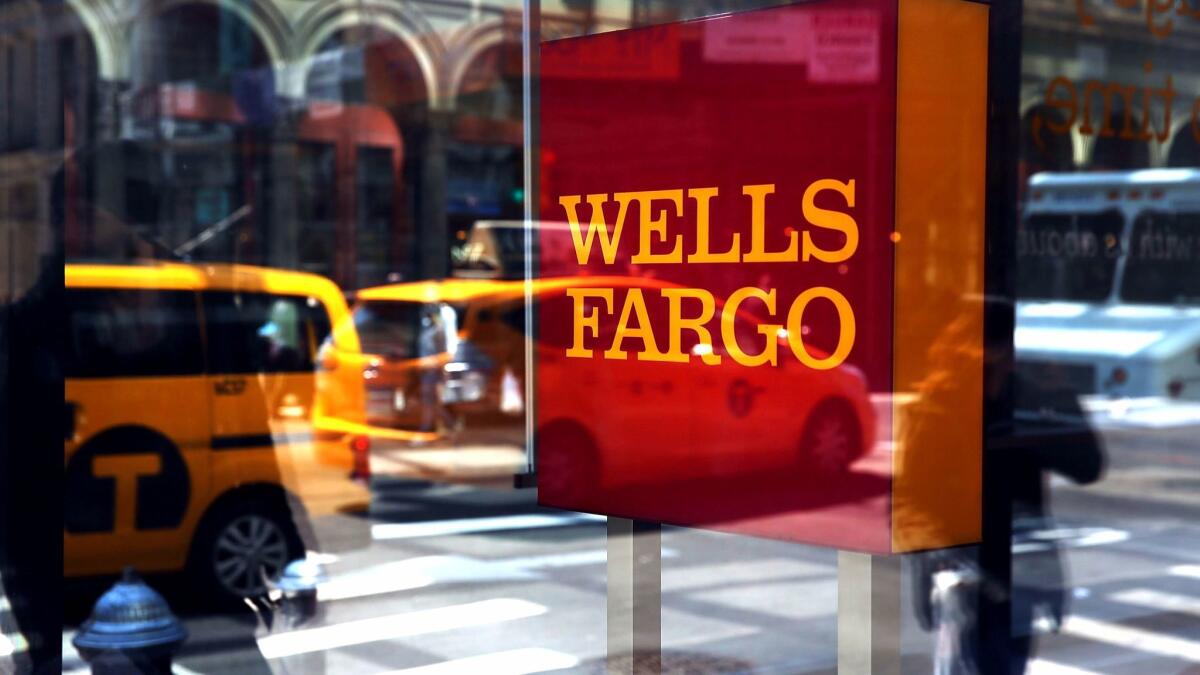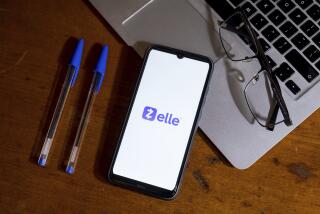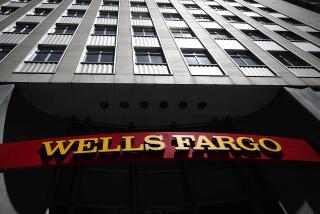Federal judge likely to approve $142-million class-action settlement against Wells Fargo with changes

- Share via
A U.S. District judge on Thursday suggested he will sign off on a $142-million deal that would settle class-action lawsuits against Wells Fargo & Co. over unauthorized accounts, as long as the agreement is amended.
Those changes could include sending settlement notices to more customers, allowing customers suing the bank over other matters to continue their cases and giving the judge more oversight of how settlement payments will be made.
Still, Judge Vince Chhabria, in a hearing in San Francisco, said that new information may emerge that could lead him to later scrap the deal.
It’s possible that “the record will develop in a way that uncovers problems with the settlement,” said Chhabria, adding the case is “such an unusual situation, and such a complicated settlement.”
If Chhabria approves the deal announced last month, he would do so over the objections of some attorneys who have filed a handful of class-action cases against the bank over the unauthorized accounts scandal.
The settlement was negotiated by the bank and the attorneys behind one 2015 case filed against the bank in Chhabria’s court.
Attorneys behind 10 other federal and state cases have said the deal is too small. In some of those cases, attorneys have brought identity theft claims against the bank — claims that are not addressed in the settlement and that the attorneys say could result in bigger payouts.
Chhabria indicated he would approve the deal over those objections but also said he plans to allow the other cases to proceed. The proposed settlement agreement had asked Chhabria to put the other cases on hold pending its final approval.
One complication facing the $142-million settlement, which both Chhabria and attorneys noted during the hearing, is that it has been difficult to determine the number of eligible customers and what they are due.
A symptom of that lack of certainty emerged last week, when plaintiffs’ attorneys estimated that the bank created as many as 3.5 million unauthorized checking, savings and credit card accounts since 2002. That’s far higher than the 2.1 million accounts the bank acknowledged last year may have been created from May 2011 to July 2015 when the scandal first erupted. And the bank’s attorneys have said that neither number may be accurate.
Determining customer payouts is complicated also because the proposed settlement offers different kinds of compensation to customers affected in different ways.
Customers who paid fees for accounts they never wanted will get refunds, but only if they haven’t received them from the bank already. Customers whose credit was damaged by unauthorized credit card accounts also would qualify for a payout, based on a complex formula that takes into account any loans they took out while their credit score was impaired.
At one point, Chhabria suggested that he may want to name a “special master” — a court-appointed overseer — to make sure customers with damaged credit are properly compensated. He noted that neither the number of affected customers nor the extent of their harm are definitively known, making it difficult to judge whether the settlement is big enough.
“From the information we have now, it looks like this settlement provides quite a bit more money than the amount people were injured,” Chhabria said. “But we’re working with incomplete information. I think, because of that, stricter-than-normal scrutiny is required by the court.”
Chhabria seemed especially concerned by an issue raised by attorney Zane Christensen, who has filed a class-action suit in federal court in Utah and opposes the settlement.
Christensen brought up the case of one of his clients, who was given an unwanted credit card account that, without the client’s knowledge, provided overdraft protection for his checking account. When the client overdrafted his checking account, his credit card was charged.
Because he didn’t know about the credit card account, and, according to Christensen, did not receive bills or statements, the client didn’t pay his credit card bill, leading to significant damage to his credit.
Chhabria noted that the proposed settlement does not seem set up to deal with the level of damage experienced by the client. Derek Loeser, one of the plaintiffs’ attorneys who negotiated the deal, argued that the client was an outlier, but Chhabria was not convinced.
“How do we know that person’s situation is unique?” the judge asked. “Given what we know about what Wells Fargo did, it doesn’t sound terribly fanciful to assume that what happened to Mr. Christensen’s client happened to other people.”
David Fry, an attorney for Wells Fargo, said it would be unwieldy for the settlement to account for all the unusual ways consumers were harmed. He said Wells Fargo is “committed to making things right” for such customers, who can work things out directly with the bank.
Chhabria, though, said that Wells Fargo has not guaranteed to fully compensate customers if the deal comes up short.
“If Wells Fargo wants to make things right, what about a full compensation guarantee?” Chhabria asked.
Chhabria also pushed the parties to notify as many potential victims as possible. The judge noted that the settlement, as proposed, includes several means of notification, including ads in various publications, but does not include sending emails or statement notices to current or former Wells Fargo customers.
Fry said the bank isn’t interested in hiding the settlement from customers and that sending notices too widely could lead to fraud.
Customers who want compensation for harm to their credit will have to show their credit was actually damaged. But customers who simply say that unauthorized accounts were opened in their names won’t have to prove anything, Fry said, and a broader notification could mean settlement payouts go to customers who were never harmed.
“We want to make things right, but that doesn’t mean we want to pay a lot of people who don’t have a valid claim,” he said. “We’re trying to balance what we agree to in terms of making things easier for people to participate against the risk to the company if we open ourselves up to some kind of large-scale fraud.”
Chhabria said he would probably give attorneys for both sides two weeks to return with an updated settlement plan he could approve.
That would allow the claims process to start, with a settlement administrator setting up a website, placing ads in publications and sending notices to potentially affected customers.
The settlement would need to get Chhabria’s final approval before payments could be made.
Follow me: @jrkoren
More to Read
Inside the business of entertainment
The Wide Shot brings you news, analysis and insights on everything from streaming wars to production — and what it all means for the future.
You may occasionally receive promotional content from the Los Angeles Times.











